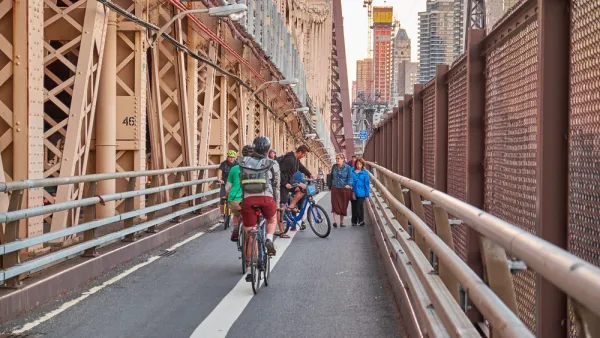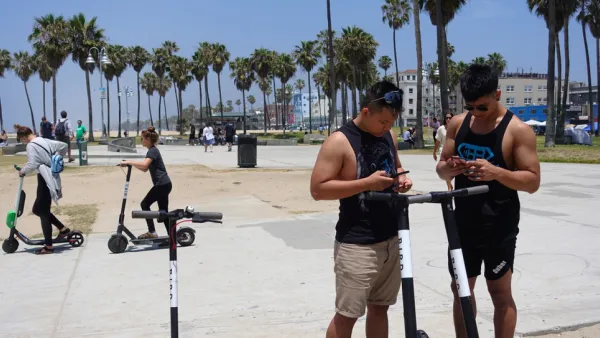New York City has several famous examples of pedestrian-only environments, but last weekend's Shared Streets event was an experiment in co-existence.
"DOT’s first-ever “Shared Streets” event limited car traffic entering a 60-block section of the Financial District for five hours on Saturday. With the neighborhood free of the near-constant stream of cars passing through on a typical day, pedestrians and cyclists were free to navigate the streets without fear," writes David Meyer.
In choosing the shared streets model instead of closing the streets down entirely to cars, New York's experiment hopefully offered lessons for people on either side of the driving wheel. For those outside of cars, the event offered new access to the streets of Manhattan. The day also (hopefully) showed drivers that they can still get where they're going at a pace safe for all users. The Meyers article also includes a lot of photos of New Yorkers (and a few tourists, presumably) making use of the streets of Manhattan in new ways.
Tom Kutsch also reported on the Shared Streets day in a separate article, noting especially the list of policy outcomes such events are intended to advance—such as improved pedestrian and bike safety and reduced air pollution and carbon emissions.
The city has yet to announce whether the Shared Streets event has a future in New York. Both articles report low turnout due to sweltering heat on the day of the event.
FULL STORY: First-Ever “Shared Streets” Brings Stress-Free Streets to Financial District

National Parks Layoffs Will Cause Communities to Lose Billions
Thousands of essential park workers were laid off this week, just before the busy spring break season.

Retro-silient?: America’s First “Eco-burb,” The Woodlands Turns 50
A master-planned community north of Houston offers lessons on green infrastructure and resilient design, but falls short of its founder’s lofty affordability and walkability goals.

Delivering for America Plan Will Downgrade Mail Service in at Least 49.5 Percent of Zip Codes
Republican and Democrat lawmakers criticize the plan for its disproportionate negative impact on rural communities.

Test News Post 1
This is a summary

Test News Headline 46
Test for the image on the front page.

Balancing Bombs and Butterflies: How the National Guard Protects a Rare Species
The National Guard at Fort Indiantown Gap uses GIS technology and land management strategies to balance military training with conservation efforts, ensuring the survival of the rare eastern regal fritillary butterfly.
Urban Design for Planners 1: Software Tools
This six-course series explores essential urban design concepts using open source software and equips planners with the tools they need to participate fully in the urban design process.
Planning for Universal Design
Learn the tools for implementing Universal Design in planning regulations.
EMC Planning Group, Inc.
Planetizen
Planetizen
Mpact (formerly Rail~Volution)
Great Falls Development Authority, Inc.
HUDs Office of Policy Development and Research
NYU Wagner Graduate School of Public Service





























